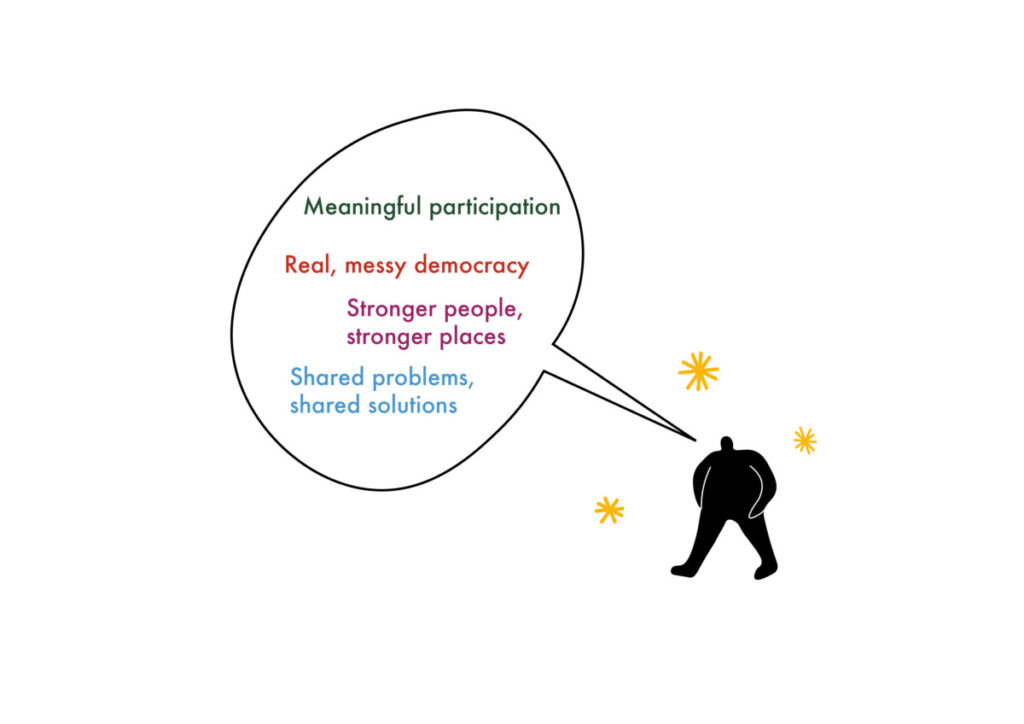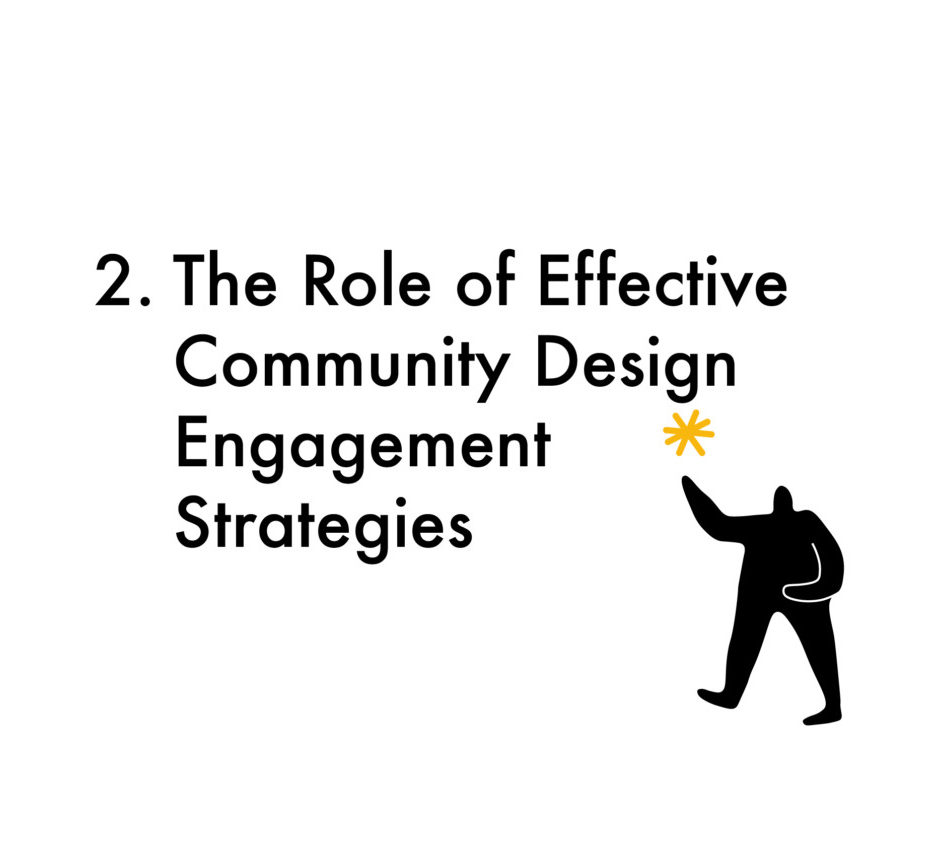Written by:
Setting a design engagement strategy starts with a commitment to investing sufficient time, research, conversations and planning to explore and plan for how engagement will fit into the broader, complex process of change. No design process in placemaking exists within a vacuum, even those that are for new developments in previously unoccupied areas. If there are not already people and organisations within that place, there will be those nearby, those who have been driven from there in the past, or those who would like to be there in the future. Every place and every design brief can benefit from a locally informed understanding of the area, dialogue with the existing or proposed user groups, and clarity over who will enliven, manage and drive the success of the place looking forward.

An effective engagement strategy requires absolute clarity from the commissioning client, whoever that may be and from whichever sector, about the sphere of influence they would like to give those who engage. All involved need to know which aspects of the design are non-negotiable and which are up for discussion, and where the opportunities for shared decision-making lie. Clarity about constraints, budgets and, above all, about the opportunity at hand are all vital to setting a strong community engagement brief and strategy.
The selection of the design team is also crucial, as the chosen team must see opportunity in working with the community, and have both the skills and confidence to engage with the community as a means of informing as well as testing the design as it evolves. The design team will need to be able to interact with the community at varying levels of detail and intensity, and have a clear understanding of how to invite people into the journey of mapping the context, setting and refining the vision and brief, generating and testing ideas, and negotiating the right combination of elements to achieve the best outcomes possible.
Setting a strategy is not something that the client can or should simply hand over to others. It requires an ongoing dialogue that brings together the client, design team, key stakeholders and the local community. There will need to be moments when the conversation expands and contracts, creating stages of design that set out clear moments of decision-making, and that allow new people to join the conversation without throwing everything up in the air again.
It is simply impossible for any one of these parties, or indeed an external consultant, to do this process well in isolation, without the collaboration of the others. It requires all parties involved to commit the time it takes to work out a clear strategy before embarking on the actual design engagement activities. They must develop a shared understanding of the values and principles of collaboration that underlie the project and set clear objectives and pathways for the engagement activities to contribute to the design process, rather than simply invite participants to comment on the design propositions that emerge from it.
The time and resources that are invested in the collaboration required to set out a considered and informed design engagement strategy can pay huge dividends, yet for many it feels difficult to justify this investment. There is always so much pressure to start the engagement activities on the ground as quickly as possible in order to meet tight funding cycles and planning application deadlines.
I suspect that this is because design engagement is generally not seen as an essential and integral part of a design journey, but instead as a hurdle for a design process to overcome to achieve planning consent. When you look at engagement not as a resource but as an obstacle, it is not surprising that these spaces so often become confrontational.
Instead, shouldn’t we be looking at design as an opportunity to enhance the design journey, as well as the project’s outcomes and impact? And shouldn’t we take the time to ensure we can get the most from this opportunity?
We are taught in so many contexts that we get out of things what we put into them, so let’s be a bit more generous with the time and resources in order to develop really considered strategies for community engagement in design. In doing so, we might just find that engagement can be not only more pleasant and productive for all involved, but that it can also open the door for long-term shared stewardship of our places and more active, empowered and engaged citizens.
The Glass-House has produced a some light-touch practical guidance around setting community engagement strategies:
A tapestry of participation: revisiting Arnstein’s Ladder
Designing Places with People: Tips for your Community Engagement Strategy
Designing Places with People: Making Community Engagement Count
There are also many other practical guides, publications and films to inform and inspire in the Resources section of our website.
This blog is the second in a series of think pieces, which we hope will serve as prompts for discussion, innovation, reflection, and iteration around engaging communities in design decision making, and to encourage others to share ideas, approaches and stories. You can read the rest of the series here.
If this blog, or any other in this series, spark some thinking or experiences you would like to share, we invite you to write your own blogs on these themes or simply to get in touch and explore how we might collaborate on them. You can contact The Glass-House team at info@theglasshouse.org.uk.
Feel free to join the discussion on social media @GlassHouseCLD.


